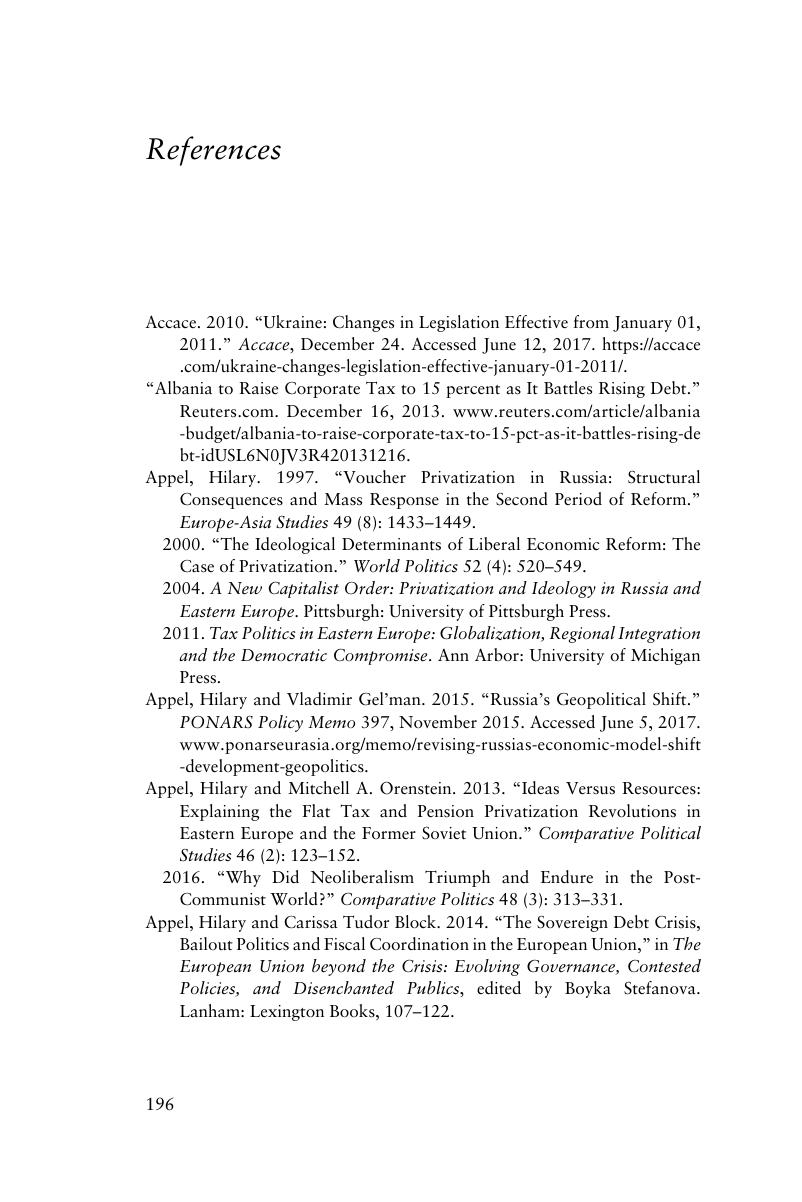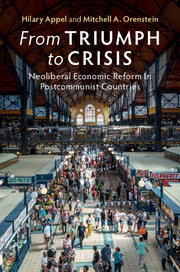Book contents
- From Triumph to Crisis
- From Triumph to Crisis
- Copyright page
- Dedication
- Contents
- Figures and Tables
- Abbreviations
- Acknowledgments
- 1 Triumph and Crisis of Neoliberalism
- 2 First Phase
- 3 Second Phase
- 4 Third Phase
- 5 Competitive Signaling and Foreign Direct Investment
- 6 The Crisis of Neoliberalism
- 7 Revising Transition Theory
- References
- Index
- References
References
Published online by Cambridge University Press: 20 April 2018
- From Triumph to Crisis
- From Triumph to Crisis
- Copyright page
- Dedication
- Contents
- Figures and Tables
- Abbreviations
- Acknowledgments
- 1 Triumph and Crisis of Neoliberalism
- 2 First Phase
- 3 Second Phase
- 4 Third Phase
- 5 Competitive Signaling and Foreign Direct Investment
- 6 The Crisis of Neoliberalism
- 7 Revising Transition Theory
- References
- Index
- References
Summary

- Type
- Chapter
- Information
- From Triumph to CrisisNeoliberal Economic Reform in Postcommunist Countries, pp. 196 - 238Publisher: Cambridge University PressPrint publication year: 2018



